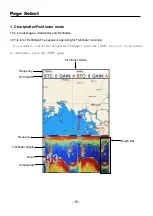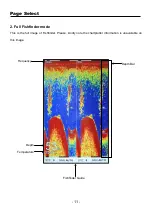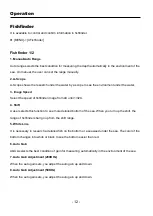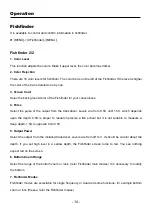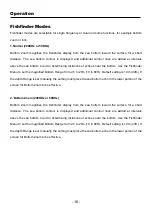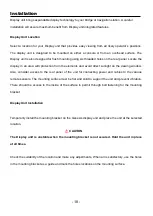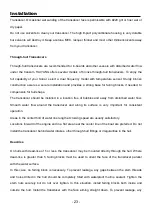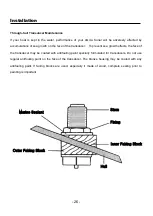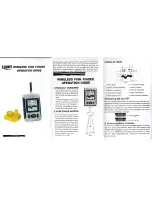
- 22 -
Installation
Turbulence caused by the trim tabs, motor mounting, the keel, and lifting strakes.
Transom Mounting
Transducers designed for transom mounting give good performance when installed on most boat
types, however, the transom transducer style should not be used on boats with inboard engines.
For boats with poor water flow under the transom or on in-boards, consider selecting a through-hull
transducer. HAIYANG offers many styles of transducers.
Determine the transducer mounting place by referring to the steps mentioned above. For best result,
the transducer face should be level. Also, the transducer face should be mounted from flush to 1/4
inch below the under surface of the hull. The trailing edge of the housing should be about 1/8 inch
below the leading edge. The adjustable stainless steel bracket is designed to allow fine tuning of the
transducer position once the installation is completed.
Route the transducer cable as far as possible away from the boat’s power cables, engine controls and
other electrical cables. Do not route transducer cables near your VHF radio power or antenna cables.
Assemble the transducer using the brackets and hardware supplied. Actual fastening to the hull of
your boat depends upon the hull construction and hull material. If additional items must be used, be
sure to obtain marine stainless steel hardware. Also, be sure to use marine waterproof sealant on all
through hull fastenings. Do not use silicone RTV, since it does not have long life underwater.
Transom Transducer Maintenance
If your boat is kept in the water, sea growth can quickly accumulate on the face of the transducer. In
just two weeks in some locations, your Sonar performance could be affected. It is recommended that
at least the face of the transducer be coated with special transducer antifouling paint. Alternatively, the
entire transducer can be painted and is easier to keep clean.
Do not use regular antifouling paint
.
All copper base antifouling paints are unsatisfactory and will prevent normal operation. If fouling does
occur, use a stiff brush or putty knife to remove growth. Be careful not to gouge the face of the



